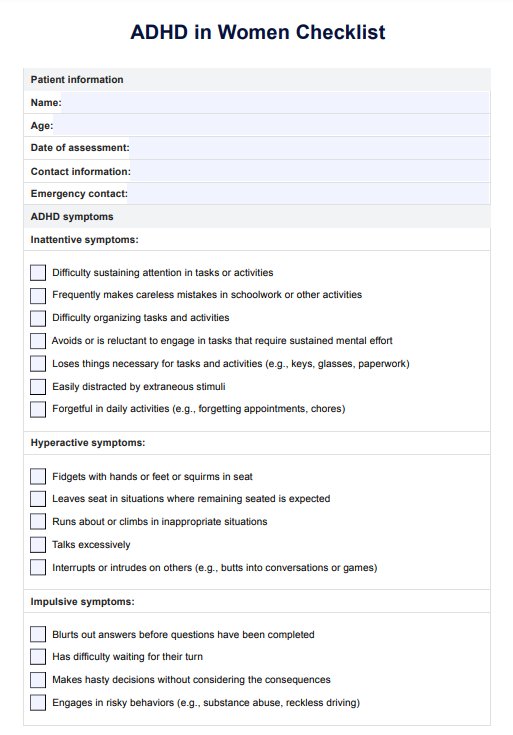ADHD is often underdiagnosed in women, with studies suggesting that about 4-5% of adult women have the condition. Many women may go undiagnosed or misdiagnosed due to the subtlety of their symptoms, which differ from the more overt hyperactive behaviors commonly seen in males.

ADHD in Women Checklist
Explore key ADHD symptoms in women with Carepatron's detailed checklist. Learn effective ways to manage ADHD for better well-being.
ADHD in Women Checklist Template
Commonly asked questions
The signs of ADHD in women can include difficulty sustaining attention, chronic disorganization, forgetfulness, and emotional dysregulation. Additionally, many women experience internalized symptoms such as low self-esteem and anxiety, which can further complicate their diagnosis.
ADHD testing in girls typically involves a comprehensive evaluation by a mental health professional, including interviews and standardized questionnaires to assess symptoms. Parents, teachers, and caregivers may also provide input on the child's behavior across different settings to ensure an accurate diagnosis.
EHR and practice management software
Get started for free
*No credit card required
Free
$0/usd
Unlimited clients
Telehealth
1GB of storage
Client portal text
Automated billing and online payments











